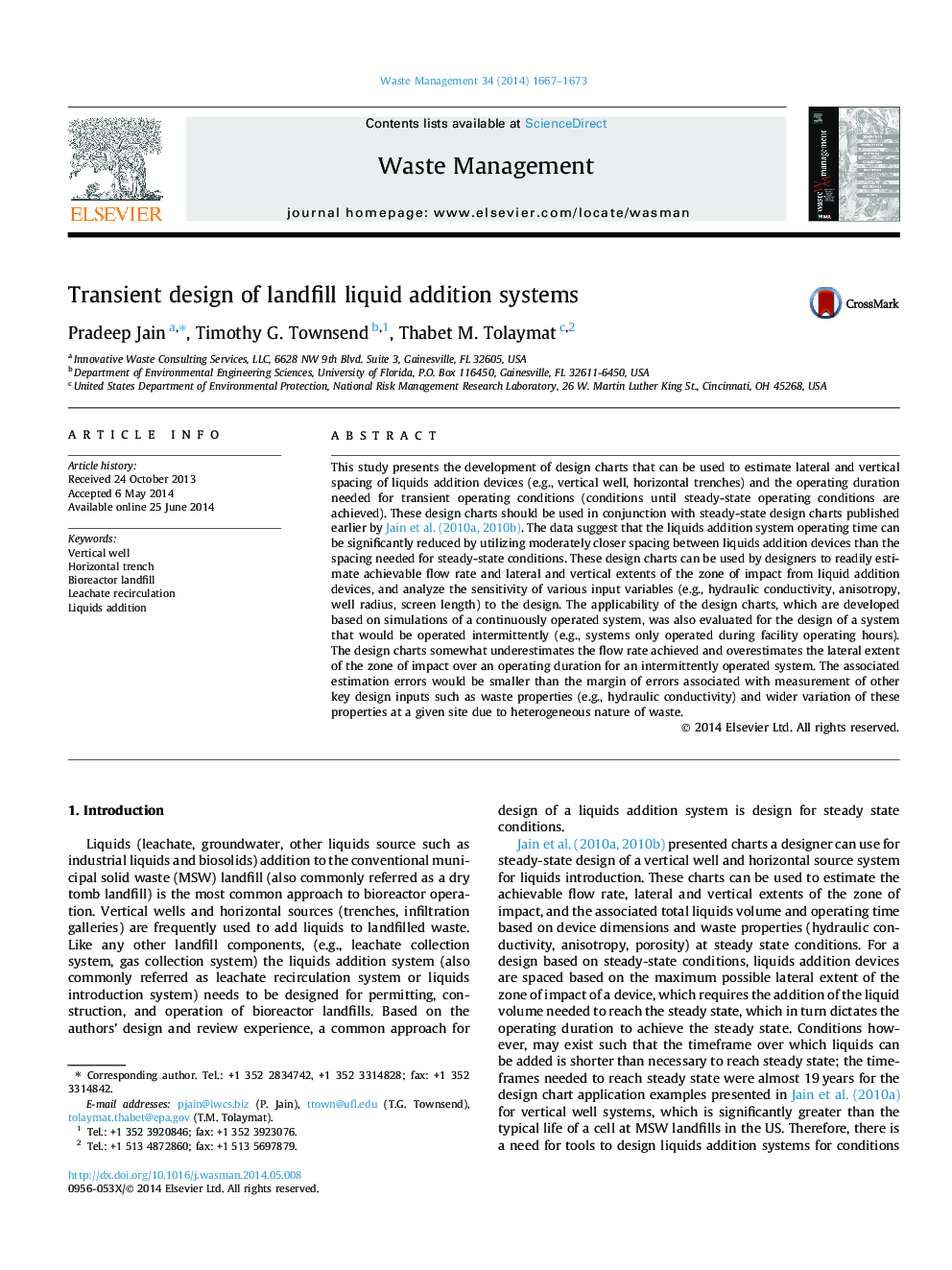| Article ID | Journal | Published Year | Pages | File Type |
|---|---|---|---|---|
| 4471472 | Waste Management | 2014 | 7 Pages |
•Charts for designing liquids addition system for bioreactor landfills for transient conditions are presented.•The charts can be used to estimate the liquids addition devices spacing as a function of liquids volume and operating time.•These charts complement the steady-state design charts/approach published earlier by the authors.
This study presents the development of design charts that can be used to estimate lateral and vertical spacing of liquids addition devices (e.g., vertical well, horizontal trenches) and the operating duration needed for transient operating conditions (conditions until steady-state operating conditions are achieved). These design charts should be used in conjunction with steady-state design charts published earlier by Jain et al., 2010a and Jain et al., 2010b. The data suggest that the liquids addition system operating time can be significantly reduced by utilizing moderately closer spacing between liquids addition devices than the spacing needed for steady-state conditions. These design charts can be used by designers to readily estimate achievable flow rate and lateral and vertical extents of the zone of impact from liquid addition devices, and analyze the sensitivity of various input variables (e.g., hydraulic conductivity, anisotropy, well radius, screen length) to the design. The applicability of the design charts, which are developed based on simulations of a continuously operated system, was also evaluated for the design of a system that would be operated intermittently (e.g., systems only operated during facility operating hours). The design charts somewhat underestimates the flow rate achieved and overestimates the lateral extent of the zone of impact over an operating duration for an intermittently operated system. The associated estimation errors would be smaller than the margin of errors associated with measurement of other key design inputs such as waste properties (e.g., hydraulic conductivity) and wider variation of these properties at a given site due to heterogeneous nature of waste.
